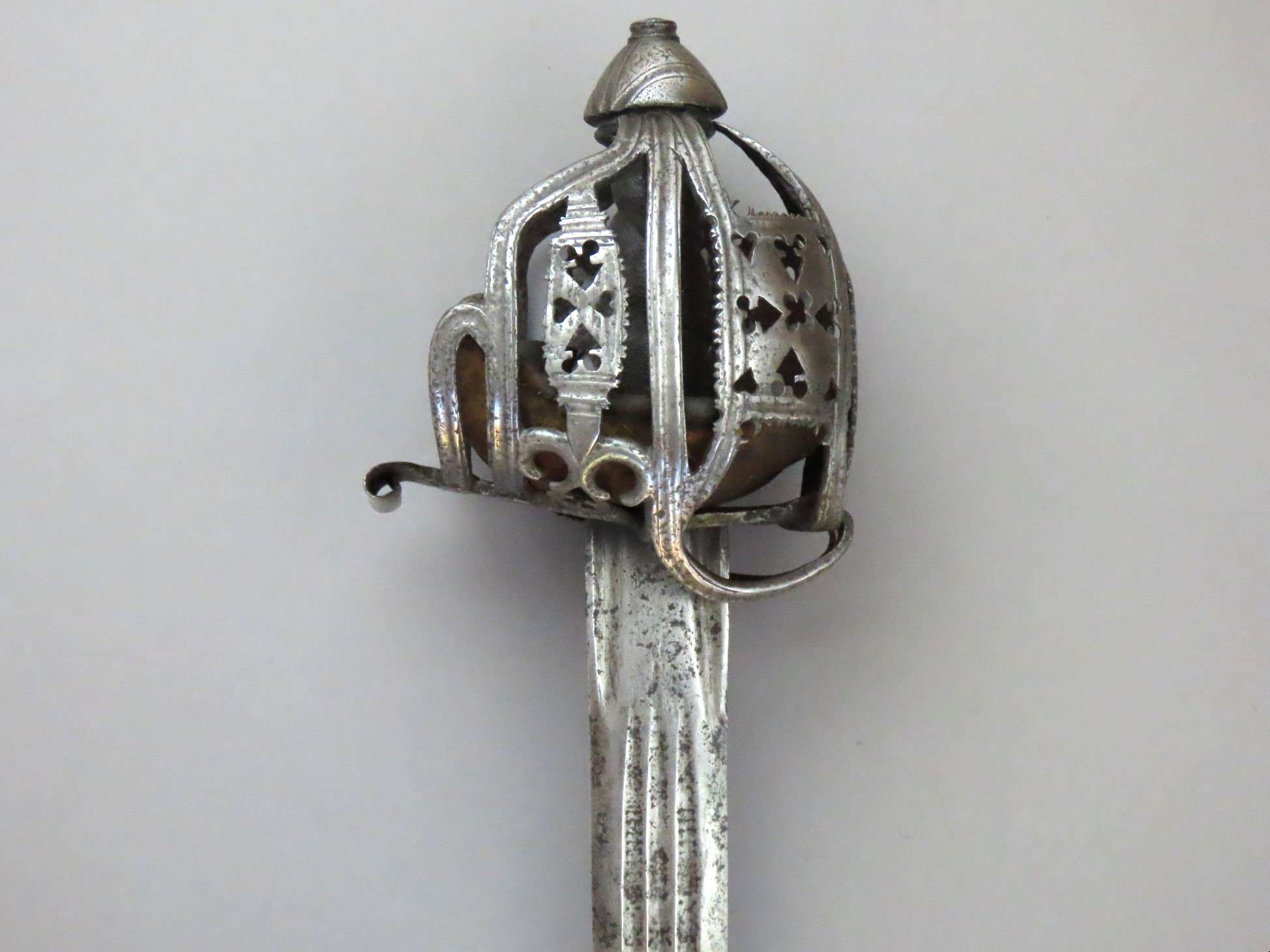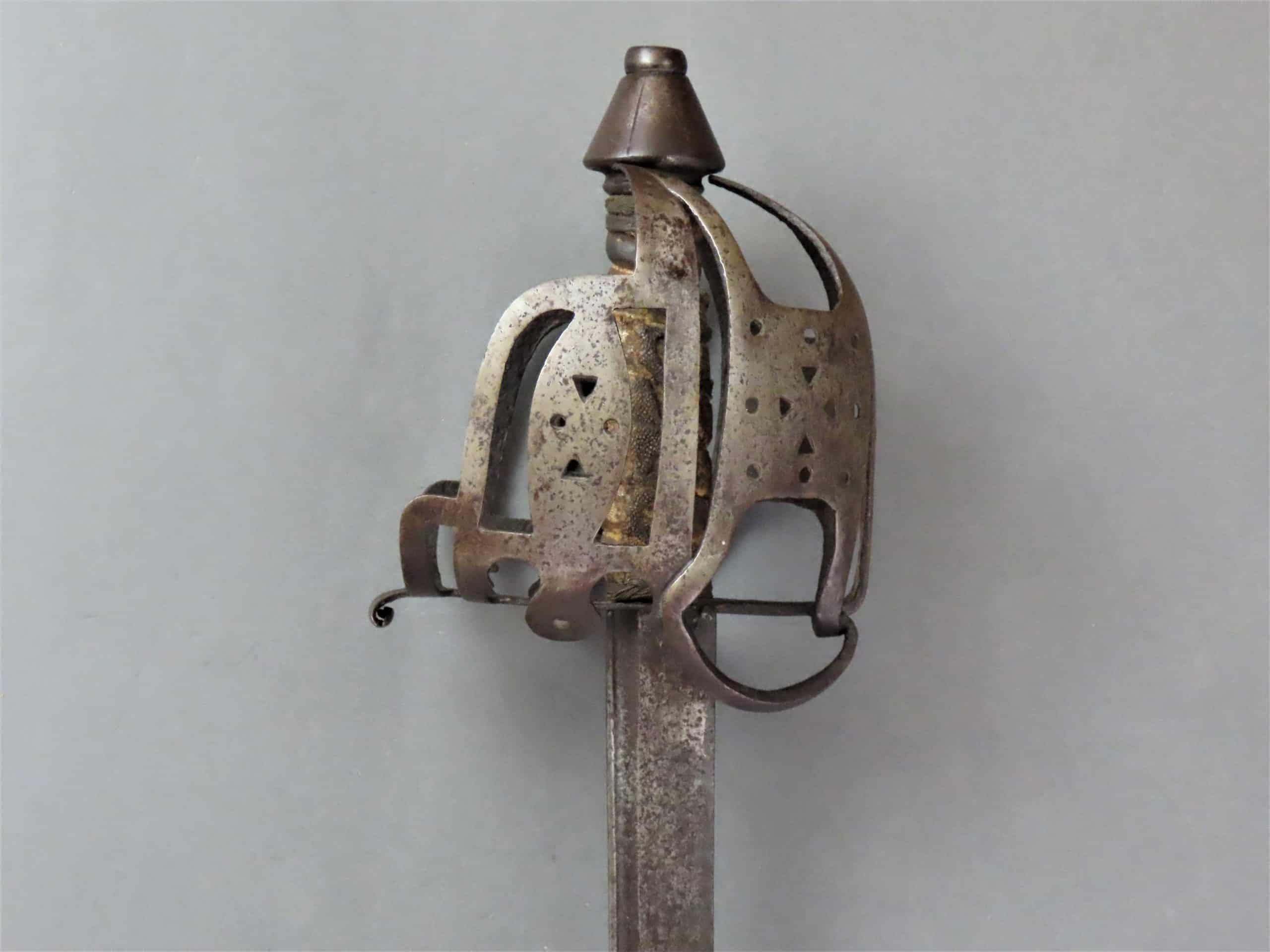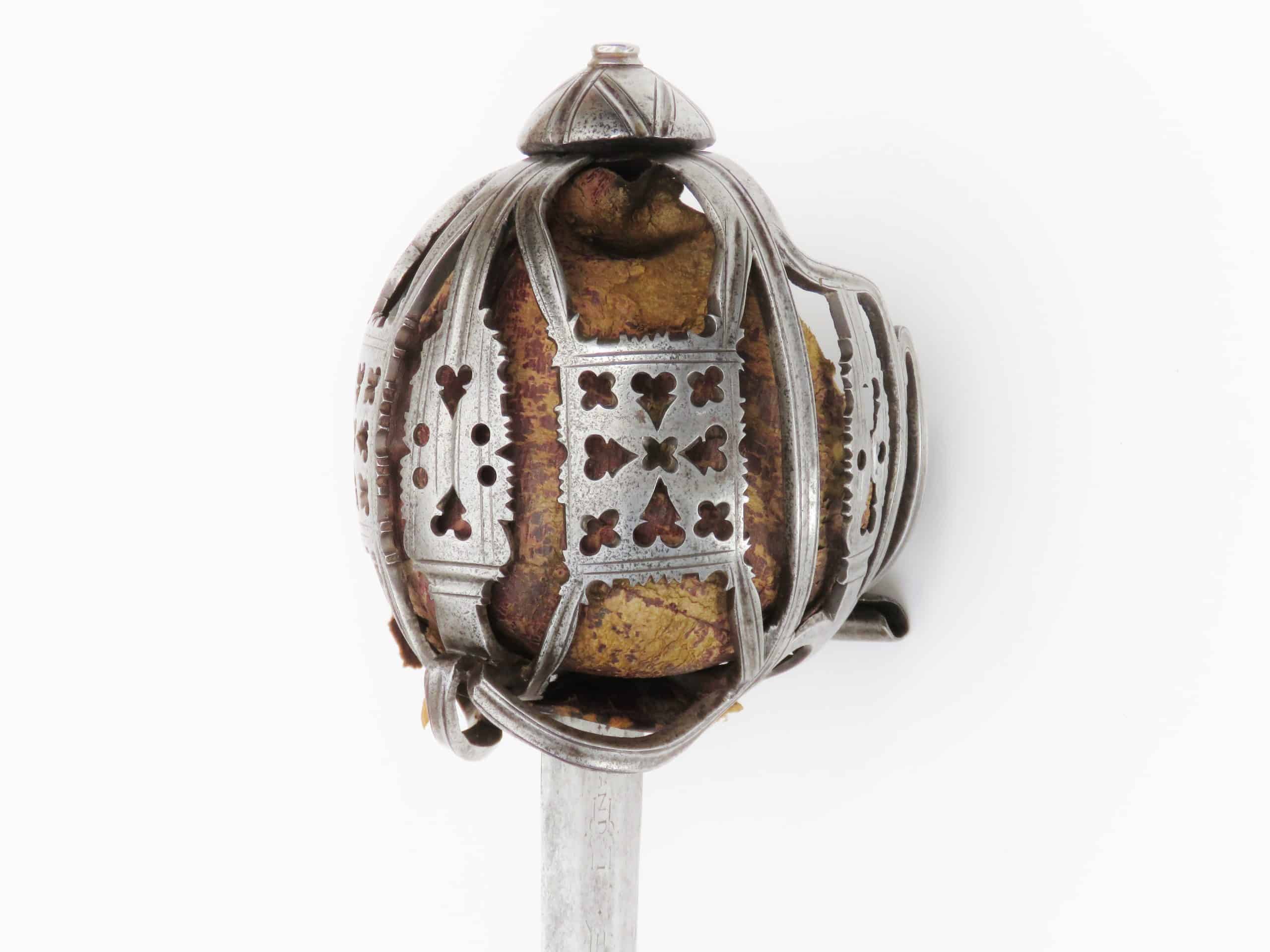
A Scottish Military Basket Hilted Sword dating to the American Revolutionary War Period marked for the 42nd Highlanders (Black Watch).
Scottish basket hilted swords of this distinctive military type were made for infantry soldiers serving in Highland Regiments, and are often associated with their service in the French / Indian and Revolutionary Wars in North America due to the numbers of Scottish Highlanders posted to these conflicts. Some swords bear store / rack numbers incised into the pommels and guards and occasionally amongst these marks the specific regiment can be …










